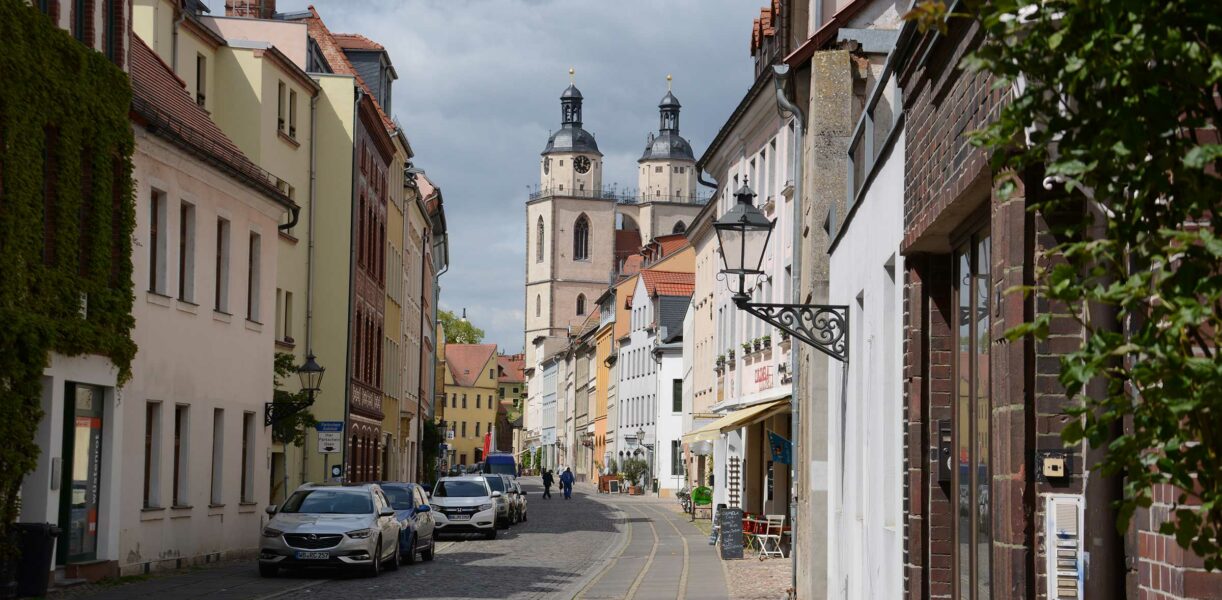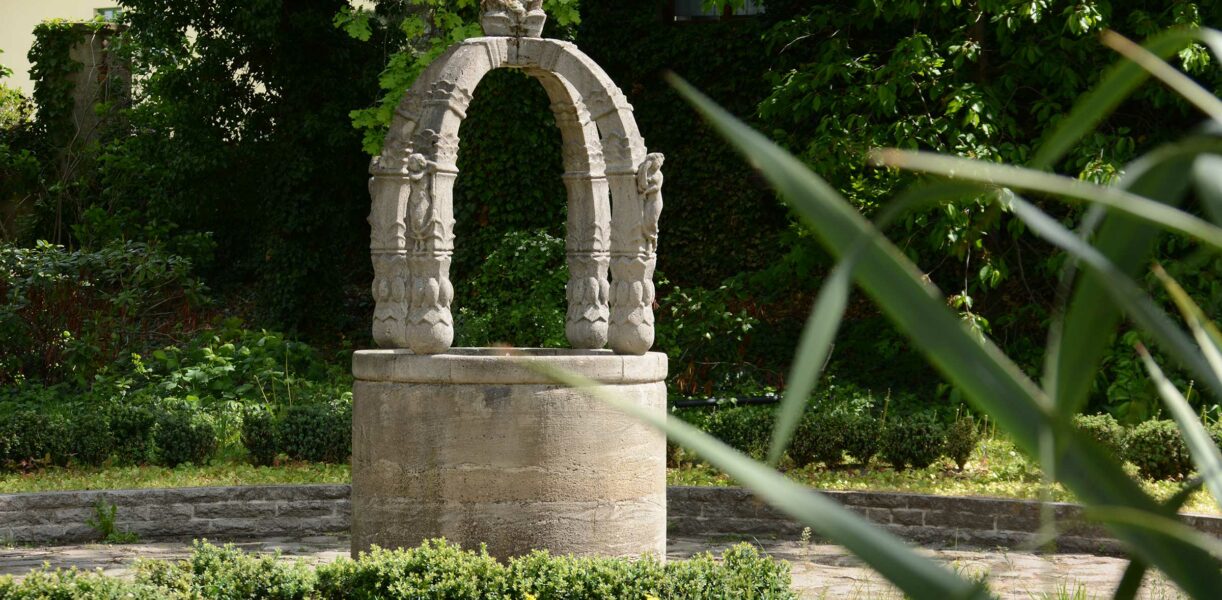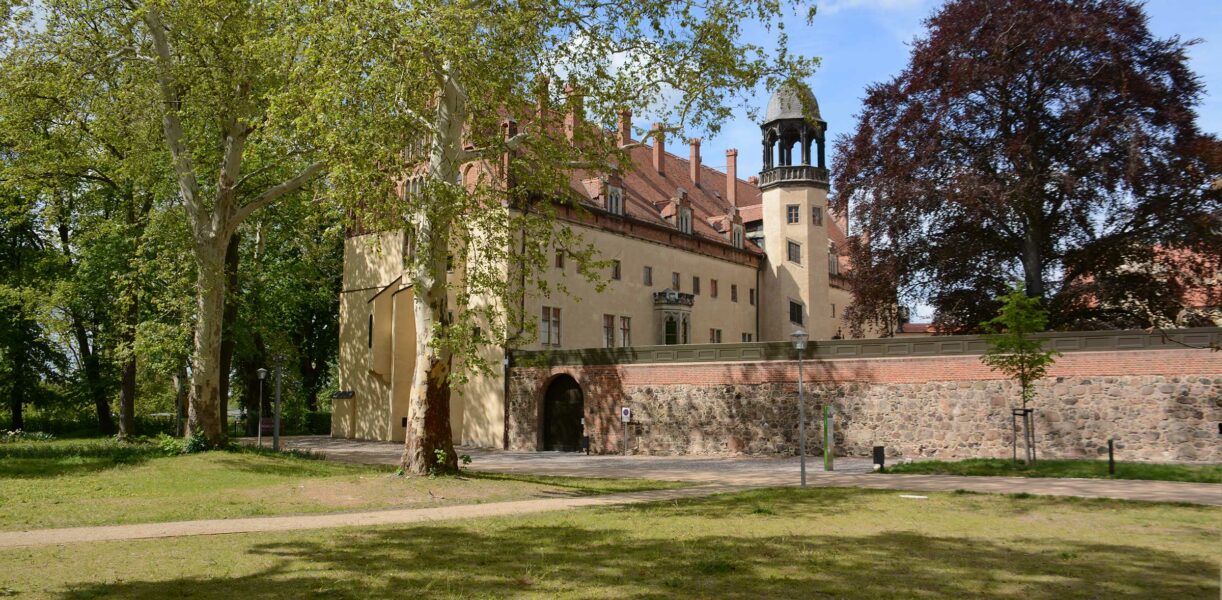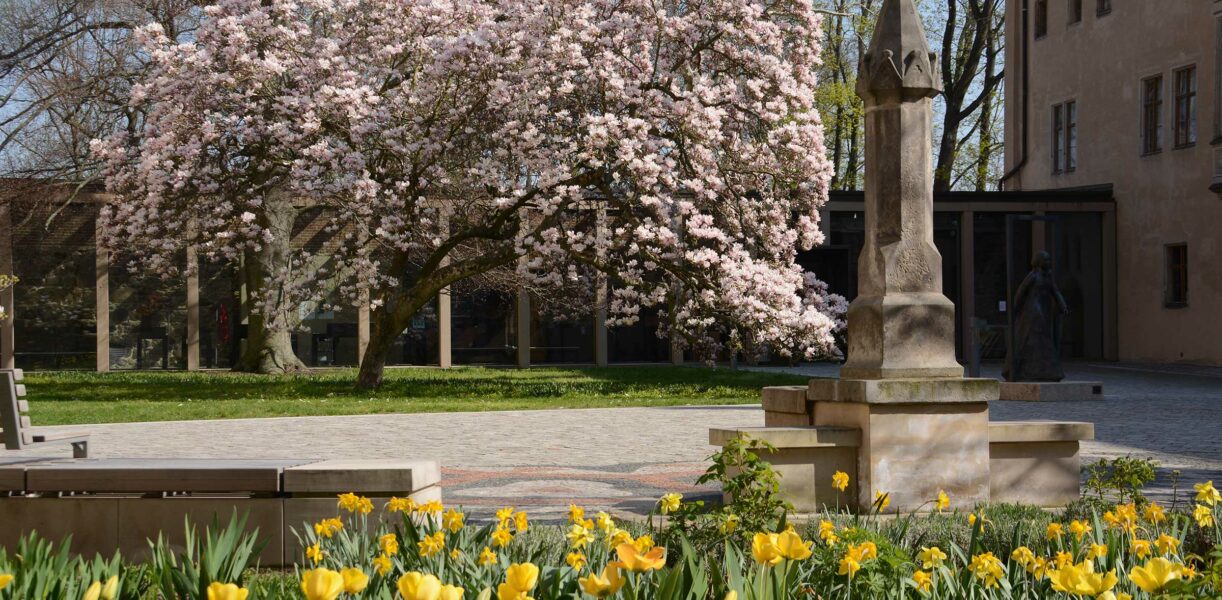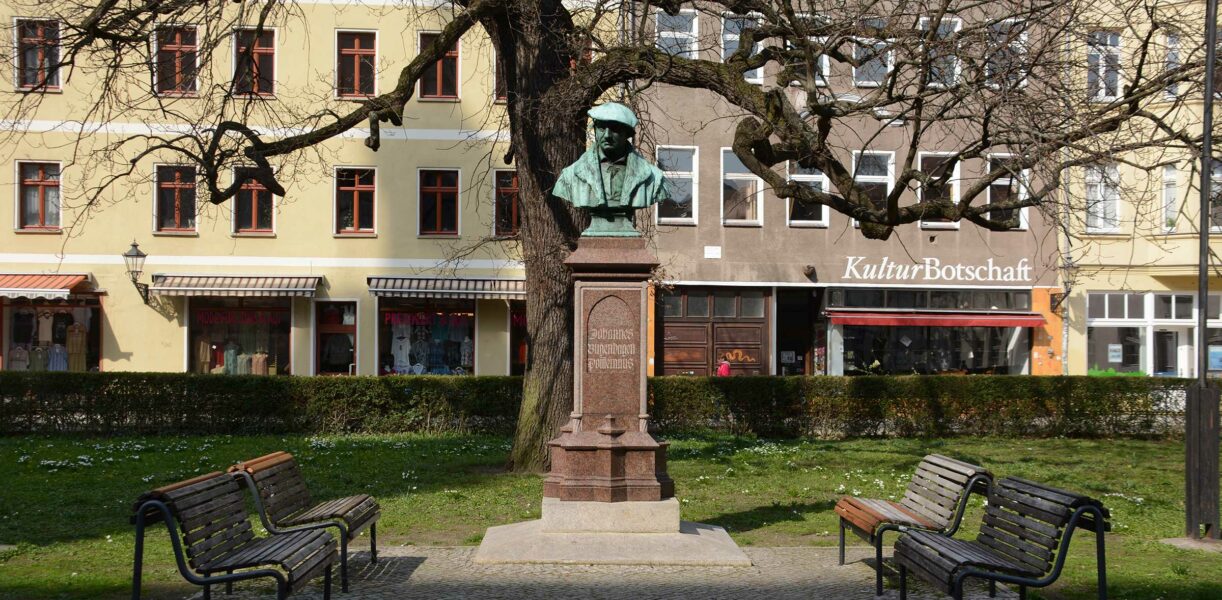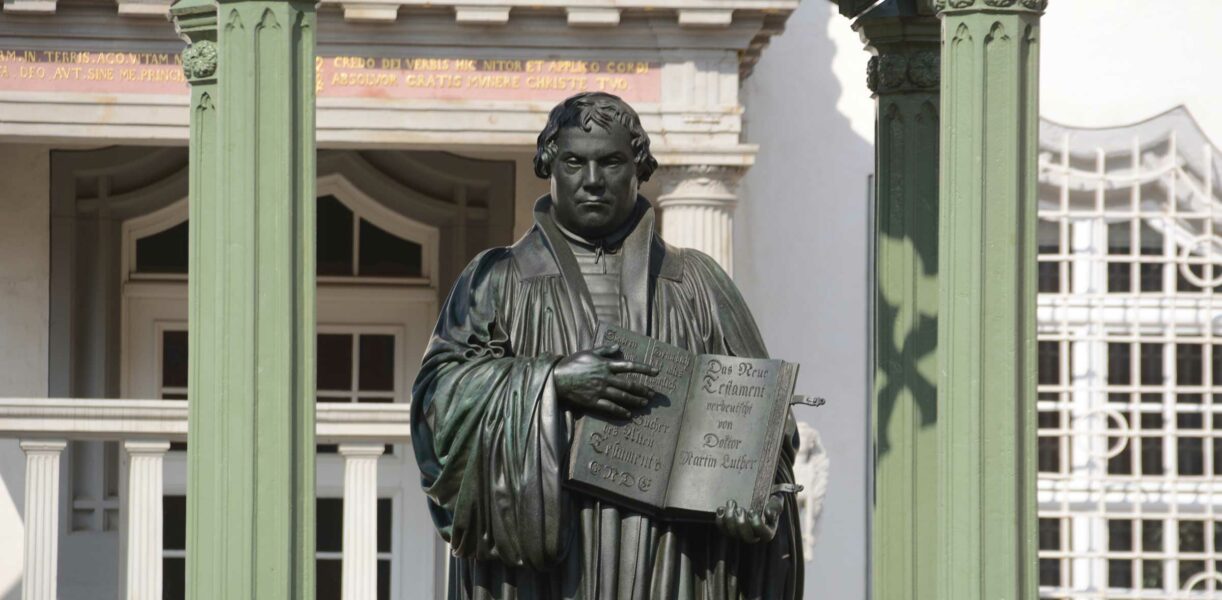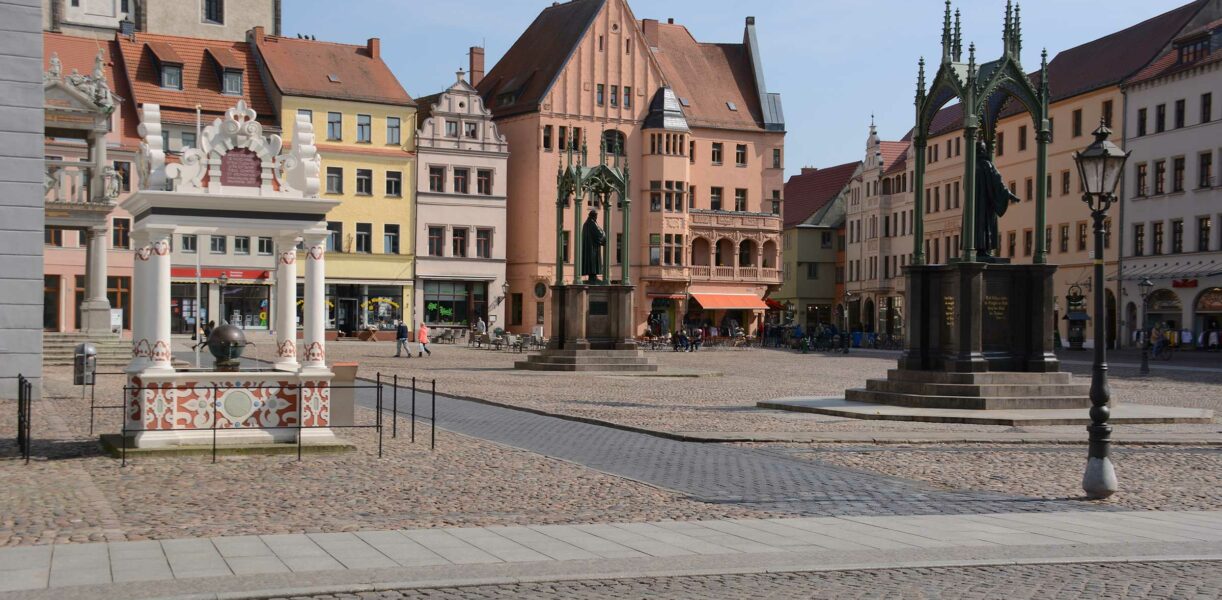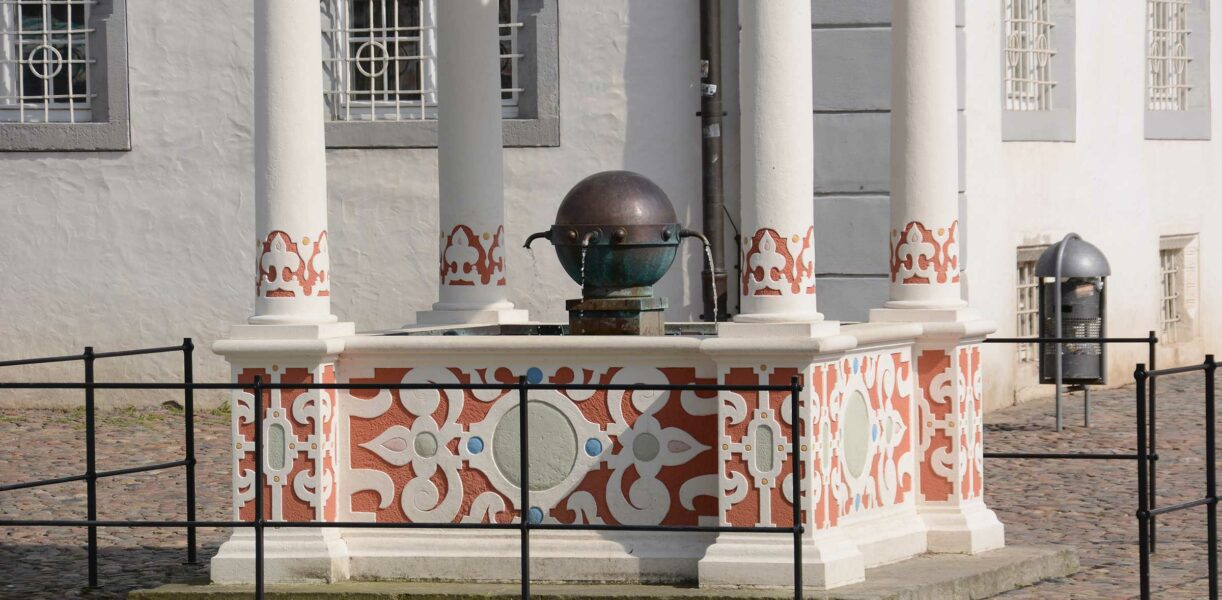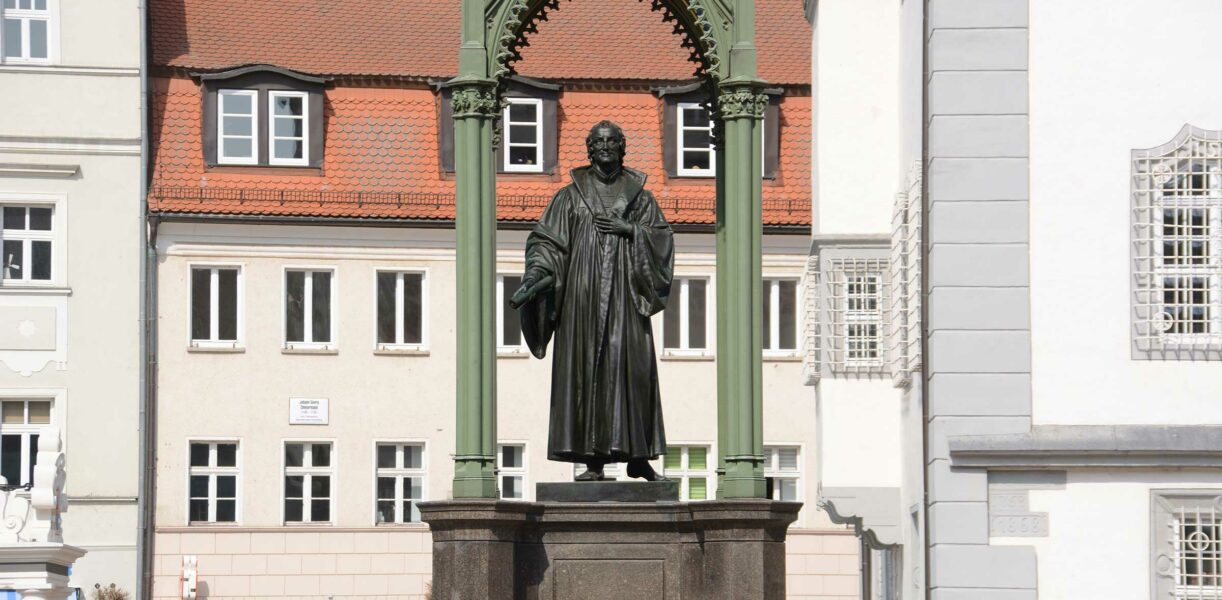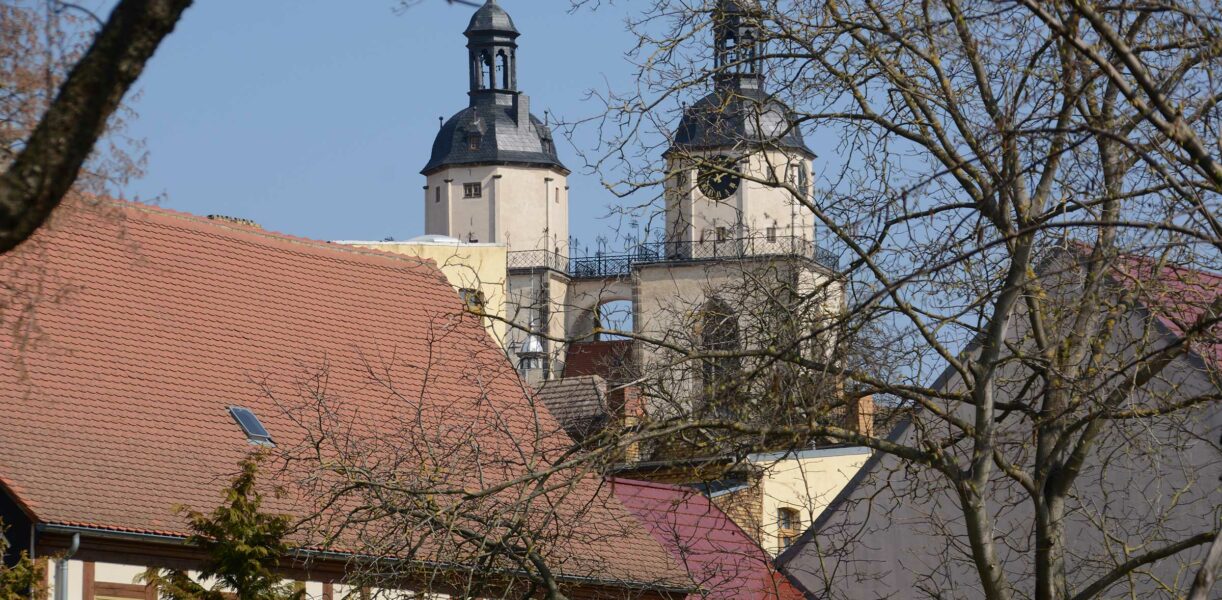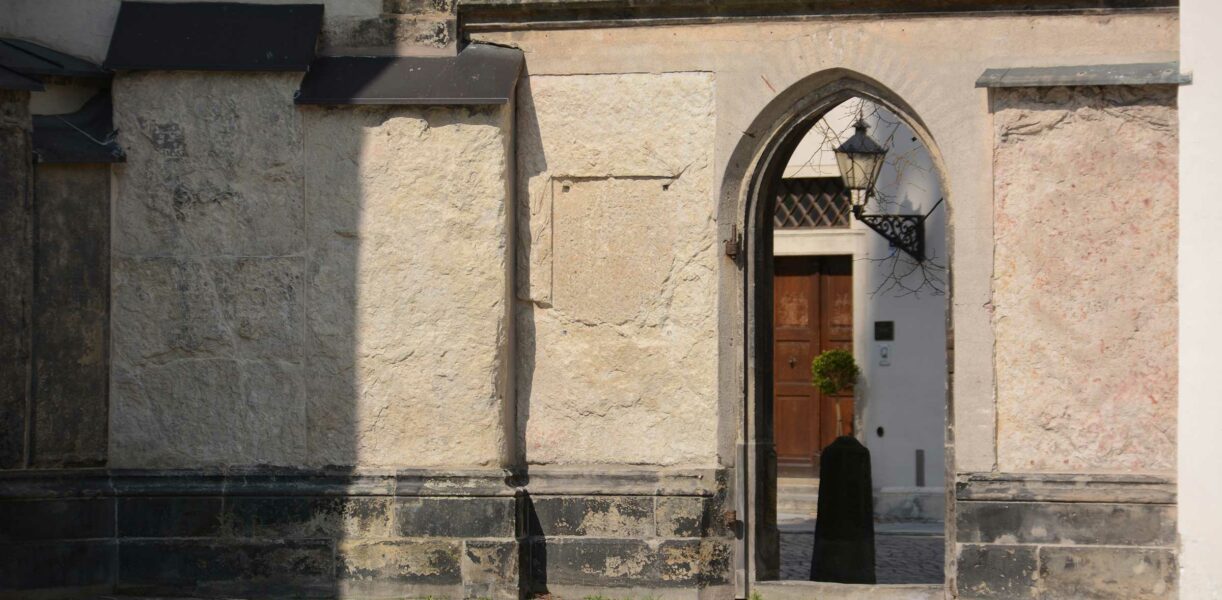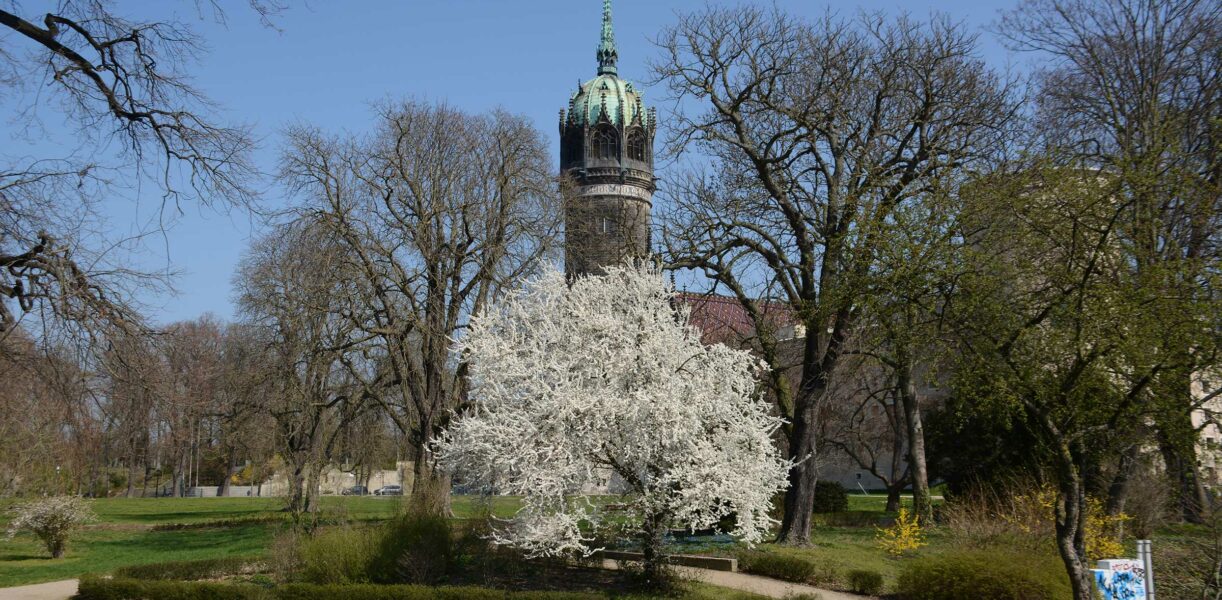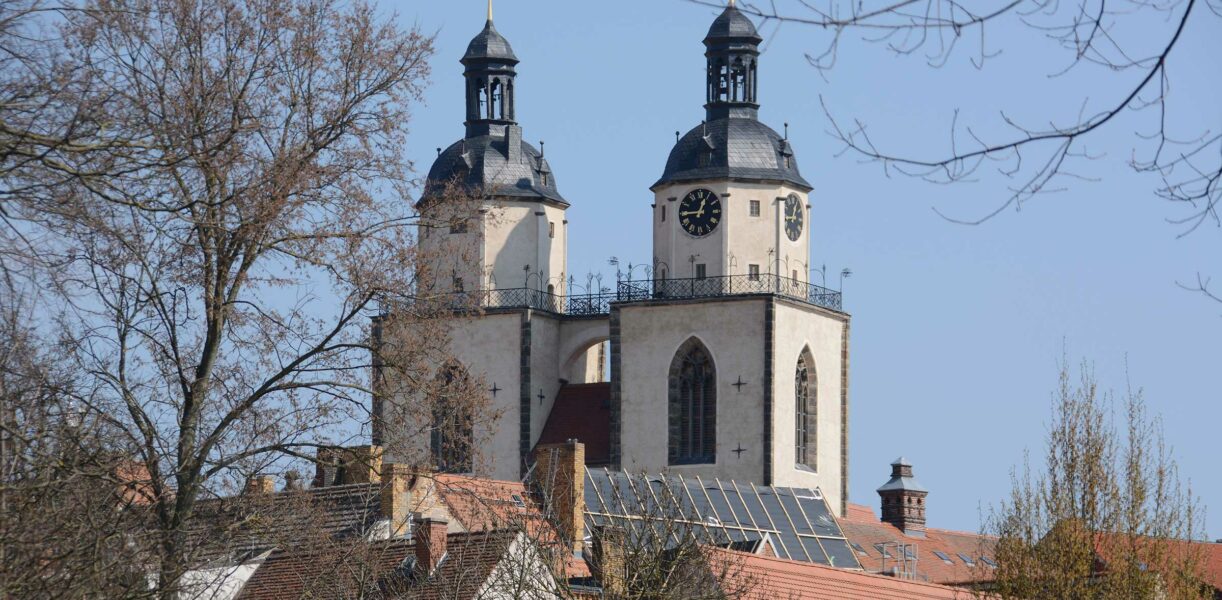Lutherstadt Wittenberg
Lutherstadt Wittenberg
Original sites of the Reformation
Wittenberg is the birthplace of the Reformation. In the 16th century, it was from here that revolutionary changes to society, religion and politics emanated, initiated by the Augustinian monk Martin Luther. People from all over the world still make a pilgrimage to the city on the Elbe to feel the heartbeat of the Reformation at original locations.
At the other end of Collegienstraße, the “Pickelhaube” of the Wittenberg Castle Church can be seen from afar, where Luther and Philipp Melanchthon, his closest companion, are buried. On 31 October 1517, Luther published his 95 theses on the door of the castle church, which were directed against the papal sale of indulgences. This event is considered the birth of the Protestant Church, which is remembered by people all over the world on Reformation Day. In Wittenberg, a big festival is celebrated around 31 October.
The friends Luther and Melanchthon are also united in two statues on the municipal market in front of the town hall. The Melanchthonhaus on Collegienstraße provides information about the “teacher of Germany”, humanists and pioneering pedagogues. Numerous houses in the city centre point to famous reformers as former residents, including Andreas Karlstadt, Justus Jonas and Johannes Bugenhagen.
The magnificently renovated city church of St. Mary was the preaching place of Martin Luther, who spoke here for the first time on German to his congregation. On the altar of Lucas Cranach the Elder, the reformer can be seen with contemporaries. The famous Renaissance artist, court painter of Elector Frederick III, and his son Lucas Cranach the Younger contributed significantly to the spread of the Reformation with their workshop. In the Wittenberg Cranachhöfe, visitors can trace the life of Cranach, who was also mayor and successful entrepreneur. Like the historic Luther sites, the Cranachhöfe are a UNESCO World Heritage Site.
In addition to Reformation Day, the wedding of Martin Luther and his wife Katharina von Bora on 13 June 1525 is celebrated in Wittenberg in early summer. The highlight of the Luther celebrations with central offers in Wittenberg was the Reformation year 2017. The panorama installed at that time by the artist Yadegar Asisi is dedicated to life in Wittenberg at the time of Luther.
But Wittenberg also has new sights to offer, such as a school designed by Friedensreich Hundertwasser, the “House of History”, with an exhibition on everyday life in the GDR and the Alaris Butterfly Park.
Lutherstadt Wittenberg
Martin Luther – Life, Work & Impact
To immerse yourself in the time of the Augustinian monk Martin Luther, we recommend a visit to the permanent exhibition on the life and work of Martin Luther.
Please contact the Tourist Information at Schlossplatz Lutherstadt Wittenberg for your planning, consultations or booking of guided tours.
Tourist-Information am Schlossplatz
Lutherstadt Wittenberg
Schlossplatz 2
D-06886 Lutherstadt Wittenberg, Germany
Phone +49 (0) 34 91.49 86 10
fax +49 (0) 34 91.49 86 11
info@lutherstadt-wittenberg.de
www.lutherstadt-wittenberg.de



